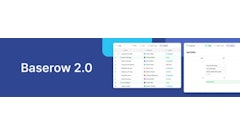Like most people who work for small companies, Russell Slegel of Dynacut, a Springtown, Penn.-based company that produces diamond saws, abrasive saws and cutting systems, wears many hats. He¹s responsible for prototype development and design implementation, and he oversees the company¹s Web site. Slegel appreciates any resource he can find that helps make his job easier.
The four employees of Dynacut work in an approximately 3,000-square-foot facility, and company owner Robert Platt lives above the shop. Dynacut works mostly with the ceramics and glass industries with clients such as Lucent Technologies, General Electric, Sylvania, Philips Lighting, Sandia Labs, the federal government, colleges and research institutions.
In need of a high-speed, high-precision, aircraft-aluminum rotary seal housing with a tolerance of 0.0005 inches, Slegel logged onto the Internet to search for machine shops and machining services. Dynacut used to make this item in-house but were in need of more parts and wanted to outsource it. Slegel had already called local shops but couldn¹t find anyone who wasn't too busy to make the part for Dynacut.
During his Internet keyword search, Slegel linked to SupplierOne.com, an e-marketplace for made-to-order parts and decided to give it a try. "It sounded like a great idea," Slegel says. "I thought, 'What have I got to lose?' I had already called people, waited and spent 15 minutes chatting before I discovered that they were too busy to make our parts."
Slegel filled out SupplierOne's online RFQ form, uploaded his specifications, elected to use SupplierOne's existing database of prequalified suppliers, and a few days later, started receiving proposals. Dynacut had purchased the same part six years ago from a supplier who was a friend of the boss and paid $7.50. This time around, Slegel expected to spend about $16 per part. Through SupplierOne Slegel chose the sealed-bid approach and received one quote for $18, one for $17, one for $9 and one for $6.95.
With the bids came detailed information on each potential supplier. "A $7 part doesn't do me any good if it doesn't fit," Slegel says. However, he investigated the low bidder, Ramsey, Minn.-based QED Manufacturing and liked what he saw. "I looked at the number of employees, how long they had been in business and the kind of equipment they had, and it looked like a reputable place," Slegel says. "The information was complete enough that I got a good feeling about the company. It's a small shop, but they have all the right equipment for just about anything."
Slegel placed the order and forwarded blueprints and a purchase order for 100 parts. Slegel also talked on the telephone with QED Manufacturing President Steve Horner to learn more about the company's operations.
Slegel had allowed for plenty of lead-time to make sure the supplier could schedule the job into his existing work load. When Slegel received the parts at the end of April, he was pleasantly surprised at the high quality. "Usually, we¹ll have problems with 5 to 10 percent of the parts being unusable," he says. "We got our order from QED, and one part had a tight thread. We fixed it, and we had a 100-percent order. The quality was super."
Using SupplierOne.com enabled Slegel to find a supplier that he wouldn't have located if left to his own devices. "I wouldn¹t have called Minnesota from here in Pennsylvania," Slegel says. "ut I would now that I know the work they do." Dynacut now uses SupplierOne to place additional orders with QED Manufacturing.
As Easy as 1, 2, 3
To use SupplierOne, buyers submit an online RFQ on forms organized by
product category and upload a CAD drawing of the component. If desired,
buyers can indicate what level of quality certification they want bidders to
have. SupplierOne matches the RFQ with suppliers who are notified and
respond online with quotes, questions or recommendations. The buyer then
reviews the responses and selects the supplier.
SupplierOne.com finds its suppliers through advertising campaigns and through its existing base of buyers. When buyers sign on with SupplierOne they can list their suppliers, use SupplierOne's database or a little of both. When a buyer provides new supplier names, SupplierOne works with the suppliers to get them listed on its database. In the registration process, buyer and supplier information is verified through sources such as Dun & Bradstreet and Thomas Register; suppliers also provide information on their quality certifications and procedures.
To get listed with SupplierOne's database, suppliers complete a detailed capabilities profile and receive notification when buyers list RFQs that meet the suppliers' capabilities. Suppliers respond to RFQs online and provide quotes and then, if chosen, receive online order notifications from the buyer. Suppliers pay SupplierOne a 2 percent to 4 percent commission depending on the size and complexity of the order.
"Many of the suppliers have participated in reverse auctions, and they don't like their price focus," says Sourabh Niyogi, president of SupplierOne. "Our process matches suppliers' core competencies to buyers' needs, and the suppliers appreciate it."
Bidders can post questions to a message board, and the buyer can respond individually or to the group. For example, updates or modifications to the RFQ would usually be broadcast to everyone, but a response to a supplier's question that included proprietary information could be sent privately to that supplier. In the future, SupplierOne plans to add a function in which the buyer and supplier can both view and modify drawings online at the same time. SupplierOne's other current options include reverse auctions and open competition.
SupplierOne leadership decided to focus on made-to-order parts at startup because that's relatively new ground. "There¹s any number of people fighting for commodity and catalog areas," says SupplierOne Vice President of Marketing Charles Formica. "Made-to-order parts, with drawings and specifications, are a lot more sophisticated in regards to programming and site functionality. We thought that if we could establish our niche here, it would be easier to move toward commodities too as our customers need it."
SupplierOne currently focuses on the North American market, but they plan to go global over time. The company is also expanding its offerings to include online order status information available to both supplier and buyer, as well as entering partnerships with other e-marketplaces, including a machining tools marketplace and a metals marketplace, that can provide more products to buyers who use SupplierOne.
Ready to Go Again
After his initial, successful experience, Slegel was eager to use
SupplierOne again. "They're my first stop now," Slegel says. "I head for the
computer, fill out my RFQ, upload my print order and that's it. Then, I just
wait for e-mails." As of early July, Dynacut had two more orders pending
through SupplierOne.
Slegel also likes the support he receives from SupplierOne. On a different RFQ, Slegel started receiving bids for $6 for a part he knew had material costs of $21 each - Dynacut used to make the part in-house for $85 each.
Slegel e-mailed SupplierOne who contacted the bidders to see what was going on. This revealed that suppliers misunderstood the online form and were putting information in the wrong space. Within an hour, the problem was solved, followed up with an e-mail and an explanation phone call. "SupplierOne took care of it. It's terrific," Slegel says.
While Dynacut usually makes the parts it needs, when times get busier, the company turns to outside suppliers for help. Slegel soon expects to outsource about 50 percent of Dynacut's needed parts - and to do so through SupplierOne. "I don't have to spend time searching for suppliers. This frees me up to address and tend to my other duties," Slegel says. "I can reach out to all the shops, including ones that are more competitive." The online system enables Slegel to cast a wider net and send RFPs to suppliers around the country, including areas that are less expensive than the East Coast.
Dynacut has also used SupplierOne to determine whether certain procedures are cost-effective. For example, Dynacut makes a part in aluminum but wanted to investigate the costs of making it in plastic. They used an online RFP, informing suppliers that they were considering changing this procedure. This helped Dynacut gauge the expense of this procedure. "We won't be making the part in plastic," Slegel says. "We would need new patterns, and it would cost us about $11,000."
Slegel did need to convince others in his company that online purchasing was a good route to take. "My boss has been using many of the same suppliers for years and is friends with many of them," Slegel says. "I showed him SupplierOne and the bid for $6.95 the first time out, and he said it didn't hurt to try it. Now, he's agreeing to it because he's seeing how convenient it is."













